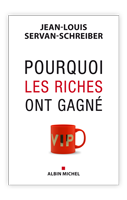Toronto, Paris, June 19, 2012 – The overall financial wealth of high net worth individuals (HNWI1) declined across all regions in 2011, with the exception of the Middle East, according to the World Wealth Report 2012, released today by Capgemini and its new partner, RBC Wealth Management. The 1.7 percent decline is the first since the 2008 world economic crisis, a year in which HNWI global wealth declined by 19.5 percent.
The 16th annual World Wealth Report finds that the number of HNWIs in Asia-Pacific expanded 1.6 percent to 3.37 million in 2011, making Asia-Pacific the largest HNWI region for the first time, surpassing North America’s HNWI population of 3.35 million. North America remained the largest region for HNWI wealth at US$11.4 trillion compared to US$10.7 trillion in the Asia- Pacific region.
HNWI population edged up slightly while aggregate investable wealth declined
After witnessing robust growth of 8.3 percent in 2010, global HNWI population grew marginally by 0.8 percent to 11.0 million in 2011. Most of this growth can be attributed to HNWIs in the $1-5 million wealth band, which grew 1.1 percent and represents 90 percent of the global HNWI population. In contrast, global HNWI wealth in 2011 fell by 1.7 percent to US$42.0 trillion (compared with 9.7 percent growth to US$42.7 trillion in 2010). The global population of Ultra- HNWIs2 declined by 2.5 percent in 2011 and its wealth declined by 4.9 percent after increasing by 10.2 percent and 11.5 percent respectively in 2010.
The HNWI population country ranking saw South Korea replace India for the 12th position, while the top three countries, U.S., Japan and Germany, retained 53.3 percent of the total share of HNWIs, slightly up from 53.1 percent in 2010. Of the top twelve countries by population, Brazil saw the greatest percentage rise (6.2 percent) in the number of HNWIs.
“While more people surpassed the US$1 million disposable income level in 2011, the aggregate wealth of high net worth individuals declined overall, as market volatility took its toll,” said George Lewis, Group Head, RBC Wealth Management. “It is significant that for the first time this year there are now more high net worth individuals in Asia-Pacific than in any other region. However, losses in key markets such as Hong Kong and India meant that wealth contracted in Asia-Pacific overall.”
2011 was second most volatile period in the past 15 Years
Following a period of near normalcy in 2010, volatility levels spiked in 2011 reaching a peak in November 2011 due to widespread concerns that the Eurozone’s debt crisis might overwhelm some larger economies. Although European Union leaders have taken steps to contain the sovereign debt crisis, weak growth and challenges in the Eurozone are expected to add to the volatility in 2012.
2 Ultra-HNWIs are defined as those having investable assets of US$30 million or more, excluding primary residence, collectibles, consumables, and consumer durables.
“Europe will be top of mind for investors, as repeated flare-ups are likely to keep markets on edge. Additional drivers such as the economic performance in China, mature market headwinds, global political leadership changes and policy decisions will all play key roles in determining whether 2012 drives increases in HNWI wealth or further losses,” said Jean Lassignardie, Corporate Vice President, Capgemini Global Financial Services.
Economic uncertainty and volatile markets in 2011 drives investor risk-aversion
Uncertainty drove many investors to safe-haven assets in 2011. Economic drivers of wealth were also diversified in 2011, affecting asset classes and producing varied results, with equity and commodity performance on the decline, tangible investments losing value, and investor preferences moving toward capital preservation through cash and fixed income. The best- performing asset class was fixed income, with the price of long-term U.S. Treasuries reaching historic highs.
Moving forward, HNW clients will need to prepare themselves for ongoing market volatility and extended periods of bimodal investment outcomes, with returns likely to be extremely positive or extremely negative, rather than equally distributed, the report concludes.
World Wealth Report 2012, dans son intégralité.


